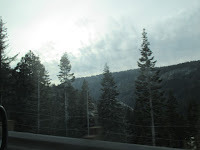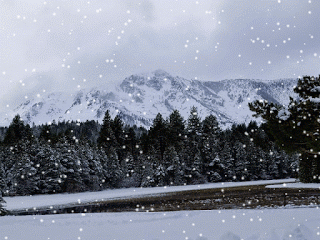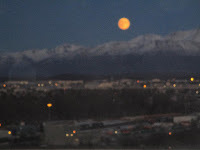Cal Orey's Blog, page 90
August 26, 2020
Can Animals Sense Oncoming Storms, Twisters, and Hurricanes?
By Cal Orey
ESP, Superior Senses, and Feline Intuition

Whether it’s ESP, superior senses, feline intuition or a change in routine, your cat may sense danger, and you should know about it.
At noon on a stormy spring day in Austin, Texas, several household cats started acting strangely. “I was in bed watching the weather channel on TV,” recalls cat owner Janet Shon. “My cats wanted to hide underneath the covers.” The heavy rains and howling winds continued, causing panic in her house full of pets. Eventually, she put them into carriers to calm them, and took cover under the stairwell. “Usually, my cats don’t mind being in the crates during bad weather,” she says, “but this time, they were chatting nonstop and wanted to be next to me.”
Several hours later, on May 27, 1997, an extremely rare and dangerous tornado (classified as an F-5), with winds measuring over 260 mph, touched down 40 miles to the North of Shon in Jarrell, Texas. Twenty-seven people died in Jarrell. Multiple tornadoes also ripped through the Austin area, killing two people. “It took the roof off the Albertsons’ store,” says Shon with awe. She and her cats survived without a scratch.
What made Shon’s cats react in such a way? Some say it’s ESP (extra sensory perception), or a sixth sense. Others claim cats aren’t gifted, just blessed with well-developed or heightened senses—scent, sound and sight, that are far superior to our own.
However you see it, cats have earned their supernatural reputation throughout history. In ancient Egypt, felines were worshipped as gods, and killing a cat was a crime punishable by death. Even modern society gives credence to the idea that cats “know” things. During World War 11, “British families found that their cats were the best warning system for impending danger,” notes Dale Koppel, author of Amazing But True Cat Facts. “They showed unmistakable signs that something was about to happen even before the air sirens were sounded. Their hair would stand on end, or they’d spit or wail. Some would head straight for the nearest shelter.”
Many people who live through terrible disasters—hurricanes, tornadoes, fires or earthquakes—believe their cats knew something before these disasters struck. But whether or not cats really predict danger is still an open debate. So, what will you do the next time Felix starts acting strange? Will you roll your eyes, or head for high ground? Read on and decide for yourself.
IS IT ESP?
“Cats have an extraordinary ability to sense imminent earthquakes, usually ten to fifteen minutes before they occur,” explains Ed Lucaire, author of The Cat Lover’s Book of Facts: A Felicitous Look At Felines. “They exhibit nervous behavior such as pawing or scratching at doors and windows, and above-average concern with the safety of kittens.”
In fact, California Geologist Jim Berkland has turned to cats (and dogs) to predict other big earthquakes, such as the infamous 7.1 Loma Prieta, California earthquake of October 17, 1989, which rumbled through the San Francisco Bay Area for 15 seconds and shook Candlestick Park in the middle of the World Series. Sixty-seven people died and more than 600 people were injured. He believes some cats hold mysterious psychic powers as well.
FOUR-LEGGED WEATHER FORECASTERS
So, what about hurricane warnings? While scientists use wind patterns, barometric pressure, sea surface temperatures and other climate factors to predict hurricanes, fishermen watch their cats. In fact, cats have long been considered good luck on ships for their ability to ward off storms, sea monsters and ghosts. Europeans of the past centuries believed cats “knew” the way home and would reveal the direction by sleeping on the side of the ship that was closest to port.
Gail Beecher, a veteran cat breeder from Needville, Texas, got a special warning before Tropical Storm Frances hit the Texas coast on September 9, 1998. Some of Beecher’s pregnant cats began to go into early labor. “When the barometer shifts during bad weather my cats always go into labor early,” she says. “I knew the storm was coming this way.” Wind speeds reached a maximum of 65 mph, and one person died due to the intense flooding of the Gulf Coast.
“All cats are extraordinary sensitive to even the smallest changes in the weather,” writes Koppel who claims, “you can throw away your thermometers and stop watching weather forecasts on TV.” A resident of Kansas City, Missouri agrees, “I have noticed before a tornado (during thunder, wind, hail and lightning) animals do lie close to the ground and pant. The bigger and fatter the dog and cat, the more it seems to affect them. Also, they sometimes put their head on the floor.”
According to Koppel, French fishermen watch their cats’ body language to get a weather report. “They watch their cats closely to predict weather changes,” he says. “Rain? Watch for your cat to pass her paw behind the ear during grooming. Windy? Your cat will clean her nose. Low tide? Wide pupils, of course. When will the bad weather end? When your cat twists and turns.”
Sound silly? Perhaps not, says John C. Wright, PhD, certified animal behaviorist from Macon, Georgia, and author of Is Your Cat Crazy: Solutions from the Casebook of a Cat Therapist, who’s fascinated by it all. However, to be certain that this is a reliable weather source, Wright says, a group of cats and their body positions should be examined carefully in a weather study for conclusive scientific evidence. In other words, scientific studies are needed.
A CAT’S GOOD SENSE
Neil Tenzer, DVM, of Miami, Florida recalls that his five cats felt Hurricane Andrew’s fury before it arrived on August 25, 1992, with winds of up to 150 mph. Amid the chaos of his family putting shutters on the windows and gathering canned food and candles, explains Tenzer, his cats grew curious and upset about the change in their environment. According to the National Oceanic and Atmospheric Administration (NOAA), this category 4 hurricane caused 58 deaths and approximately $27 billion in damage. “It’s not that they predicted the hurricane—but they certainly sensed it was on its way,” Tenzer says.
A former North Carolina resident agrees. She was in the path of Hugo as the hurricane headed toward Charlotte in 1989. Hurricane Hugo passed directly over Charleston, South Carolina, on September 21, as a category 5 storm with wind speeds in excess of 135 mph and a storm surge of nearly 20 feet. Hugo caused 57 deaths on the U.S. mainland (mostly in North and South Carolina) and 29 deaths in the U.S. Virgin Islands, according to NOAA records. Total damage: $9 billion. “I had indoor cats and barn cats there,” she recalls. Apparently, her cats share the same reaction to all severe storms. “Barn cats always seem to find shelter well ahead of a storm.”
Some argue that extrasensory perception is really just super senses. In the case of earthquakes, for example, cats may be sensitive to the earth’s vibrations and sound waves right before an earthquake hits, says geophysicist Bruce Presgrave, from the United States Geological Survey (USGS) in Golden, Colorado. Other people suggest that cats are able to detect minute shifts in the earth’s magnetic field or in the earth’s magnetic field or in the earth’s static electricity, which occur before a jolt.
FIRE DETECTORS
Smell may play a role in why felines are often good fire detectors. “For some reason or another, cats may be able to sense a fire or [perhaps notice] something different in the air before humans do,” says Lieutenant Edward Campbell, public information officer for the San Francisco Fire Department. “And that can contribute to why cats are able to get out of harm’s way before firefighters come to the rescue.”
Indeed, cats have an acute sense of smell—60 to 80 million olfactory cells, whereas, humans have five to 20 million. Keen hearing plays a role in fire detection, too. A crackling fire can ignite a cat’s fight-or-flight response. Many indoor/outdoor cats fled for their lives to escapes the raging inferno, as the black clouds of smoke hung overhead on October 20, 1991, during the Oakland-Berkeley Hills fire. Twenty-five people were killed in the six-alarm blaze that ran wild for almost two days before it was contained.
Ray and Carol Steiner of Bowling Green, Ohio, have their red tabby Manx’s good sense to thank. On an August morning in 1995, Carol’s three-year-old male cat, Ringo, acted as though he wanted to go outside, twice—but didn’t go out. Then, he made a “high-pitched meow,” says Carol that she interpreted as “follow me.” Ringo led Carol to the side of the house where there was a large bed of lava rock. Without hesitation, the cat began digging into the sharp rocks until his paws began to bleed. At last, Carol smelled the odor of gas and quickly sought help. When the gas department inspector arrived, he found the deadly natural gas leak under the rocks—a flame could have sent the neighborhood into a devastating conflagration.
How did Ringo sense the impending disaster? “He noticed the difference in our behavior,” says Carol Steiner, who thinks the cat showed extrasensory powers. Both Ray and Carol had fallen victim to a host of ill health effects, such as high blood pressure and slurred speech—methane poisoning, according to their doctor’s diagnosis. Odorless natural gas is laced with a tracer, says Carol, which Ringo must have detected. “We were sleeping 19 hours a day,” she says. “Somehow he was able to detect that gas was the culprit.” So, was it ESP? or an excellent sense of smell?
REACTING TO CHANGE
Most people recognize that cats don’t like change too much. Perhaps felines don’t “sense” danger, but are instead reacting to change in routine or environment. “It may be novelty of those particular cues, rather than the cat knows that this is danger,” says Wright. And often, it’s fear of the unknown. “Fear motivates cats to act out,” he adds. “When they can’t cope with the stimulus they go emotional on us. Sometimes these emotional responses lead cats to run over and over their escape routes or make some noise to get out.”
Deputy Director Gary Grice of the National Weather Service Storm Prediction Center in Norman, Oklahoma, relies on complex scientific theories and computers to forecast powerful twisters. However, “there is a possibility that animals react to the significant pressure changes of the atmosphere before a tornado hits,” he concedes. So can feline barometers detect the difference between an impending hurricane or tornado? “Since there are similar weather phenomena associate with tornadoes and hurricanes, you’re likely to get the same reaction out of cats because they are reacting to the same kinds of things,” explains Wright.
“Although there’s research that’s ongoing in different areas, when your life is on the line and you have to depend on something so you get out of harm’s way, the clear answer now is to heed the warnings that are issued by the National Weather Service and do what they say,” says Grice. He goes on to say that “scientists do not have a 100 percent track record for predicting disasters.” As for cats, Grice believes that are not perfect predictors either since it’s not known if they are responding to disaster precursors or if they are behaving strangely for other reasons. “Our success rate is much, much higher than what you’re getting from animals,” he says.
Meanwhile, Shon wonders about her cats’ behavior before the deadly Texas tornado. Did they sense the nearby funnel clouds on the day of destruction? Was there a change in smell or pressure, or did Shon’s own behavior affect the cats? We’ll never really know. But at least some disaster experts are now realizing that some cats can sense impending gloom and doom. The question of whether cats can predict a cataclysm hours or days in advance requires more research.
But since scientists admit they aren’t able to reliably predict earthquakes, fires, hurricanes and tornadoes, is it really so far-fetched to monitor cats?
Cat experts advise cat owners to do just that. “The cat’s first instinct is survival, and cats are the best survival machines Mother Nature has ever developed,” concludes Eric Swanson, author of Hero Cats: True Stories of Daring Feline Deeds. Whether cats are gifted with some kind of sight, or not—felines continue to inspire a spiritual nature that cat-lovers respond to. What they actually see, and what we see in their eyes is impossible to say.
Consider what the late Jeane Dixon wrote in her book Do Cats Have ESP? “In the dark, [cats’ mysterious eyes] seem to hover alone, disembodied and shining brightly on the darkest of nights. Ancient people believed the cat had captured a piece of the sun which it called up at will to see in the dark.”
August 22, 2020
The Oakland Firestorm...Angora Fire, Author's Recollections

A Cat’s Eye View Of… The Oakland Fire
(California is Burning, August 2020)
On Sunday afternoon, October 20, 1991—just two years after the Loma Prieta earthquake rumbled the California S an Francisco Bay Area—a de vastating conflagration created a Stephen King-type of nightmare for East Bay pet owners and their pets.
The Oakland fire was not only a human tragedy—affecting the h uman-animal bond—but a never-ending feline disaster. Cats and their owners were separated during the terrifying chaos. As the wildfire spread through the Oakland/Berkeley hills, wildlife and companion animals fled for their lives.
Many East Bay residents who tried to rescue their pets in the beginning of the commotion recalled that their cats were scurrying up and over their shoulders because they were in such a panic state. Some pet owners were able to roll a towel around their cats and escape. When owners of pets were forced to evacuate their homes while the huge black clouds of smoke hung overhead, many indoor-outdoor cats were out of sight.
Unlike the earthquake of ’89, the odds were against cats in the immediate fire area. As the temperature soared to 2000 degrees Fahrenheit, cats didn’t have a safe refuge. The East Bay Fire—one of the worst in the United States—was out of control for 69 hours as the warm Santa Ana-type winds intensified the natural disaster.
San Francisco’s Pets Unlimited Veterinary Hospital manager, Linda Drake said, “There are people that said ‘Cats stay low to the ground’ and ‘Smoke overcomes people and they topple over.’ But maybe a cat could keep under the smoke barrier and could somehow make it through.” No one knew for sure.
THE DAY AFTER
Before the fire was under control, the plight grew worse for many upper-middle class residents in the neighborhoods like Broadway Terrace and Hiller Highlands. Cat owners were hit with a double-whammy: Already grief-stricken about their burning homes, they had to cope with the fact that their pets were still missing in the fire area, and coined as fire victims, too.
Reports from the animal shelters were bleak and frightening. “It’s far worse than the earthquake. We understand there are still several cats hiding up in the fire area. They’re hiding underneath the rubble,” said official Rhonda Rose of the Berkeley-East Humane Society.
Immediately, Oakland Animal Control set up a team of animal control officers and other animal agencies to do search and rescue in the fire area. “Monday was not a good day because the fire was still burning,” explained Jim Parr, director of the Oakland Animal Control. Still, cats were being brought in by their owners because the owner had been displaced and needed a place temporarily to keep their animal.
On Tuesday several animal control groups went up into the area of ashes and devastation. “We have rescued a few cats, we’re not finding many,” reported Marilyn Estes, senior animal control officer for the Oakland City Animal Shelter. “They’re still hiding. Today we intend to set traps as soon as we get up there with food and we’re hoping the animals will get up there and eat and then we’ll be retrieving the traps.”
News reports continued: “Wildlife wandering through the ashes…Animals in need of rescue,” and “One lady lost seven cats which have no idea how to survive in this devastated environment.” Yet animal agency posters were more positive: “Don’t give up—animals will run miles, hide weeks. Search holes, storm drains.”
Some cats were found alive. Some were found, but ended up at the shelter with either “Owner Unknown” tags on their metal cages. Others, according to the calls incoming to the shelters, were still missing. The belief was that many cats had not escaped the ravaging fire.
THE FIRE-SPOOKED SURVIVORS
As expected, the cats were disoriented, frightened, shell shocked and reverting to wild animals. “They’re hiding in and under the burned out rubble. A news crew found a cat that was under some smoldering material from a house,” recalled Estes who rescued the blue-eyed feisty Siamese-mix. “She was quite traumatized and not an easy cat to handle. She was singed and paws were burned some, but that cat was a lucky one.”
Like the Siamese, many of the cats that came in from the fire area shared similar physical symptoms: singed whiskers, eyelashes, burned paws and pads. Most of the fire victims suffered from second degree burns, according to Pam Rohrich, DVM, of the Oakland SPCA, who tended at least 20 survivors. Ironically, smoke inhalation wasn’t a major dilemma, she said, since X-rays proved their lungs were clear.
“We’ve had some loss of ear tips in the cats so they’re always going to have funny, short ears but that’s OK—they can do with that. We’ve had some mild ulcerations, but again it’s been superficial. Basically, the things were reasonably superficial or they died,” said Dr. Rohich.
She also noted that treating fire survivors, as you’d expect, is a stressful ordeal. “They don’t like it. It’s uncomfortable. Burns are extremely painful. It’s not fun to have to subject these animals to discomfort every day.”
LOST AND FOUND
Many of the burned-out East Bay residents did not just endure a tragic fire and lose personal belongings. “It’s at the point where they’ve lost their homes and a couple of days after they suddenly realize they’ve lost their pets, too,” said San Francisco’s Pets Unlimited Veterinary Hospital manager, Linda Drake.
The first few days after the fire, shelters quickly learned it was hectic for pet owners to try and reunite their cats. “So far hundreds of people have called in about their lost pets. The majority of them are cats. Unfortunately the majority of cats do not have tags,” said Beverly Scottland, development director at the Oakland SPCA.
Pets Unlimited was swamped, too. “Every other minute we’re getting a phone call. Eighty-five percent are for cats. Everybody who is calling is giving us a description and where they are and describing what the cat had, a collar, etc.,” said Drake.
Like after the earthquake, Bay Area people supported one another and united at a grassroots level. There was no time for red tape. No time. So people at shelters, veterinarian practices and other animal agencies, quickly offered free medical care, temporary shelter and other needed animal services.
To help simplify the procedure and reunited cats with their owners, a lost-pet hotline (computer data base matching lost pet reports and animals in shelters) was created.
Two weeks after the fire, the data base had a listing of more than 200 cats found alive, according to Dr. Rene Gandolfi, chairman of the disaster preparedness committee for the Alameda County Veterinary Medical Association.
Hotline statistics prove fire refugee’s tragedy and triumph:
41 dead cats found in the fire area.
75 cats reunited with their owners.
As of November 6th, 17 kittens and 110 adult cats had been rescued and are either at a shelter, under foster care or have not yet been claimed by their owners.
FOUR-LEGGED FIREFIGHTERS AND THEIR FAMILIES
After the Oakland Fire, some cats returned home without the hotline. One homeowner who went up to his house, and his totally singed cat was there on the front stoop waiting for him.
Other cats needed coaxing from humans. On Thursday night, four days after the fire, cat owner Stacy Hofmann and her family returned to their burned lot. They had lost five cats.
“We called first for any of the cats,” recalled 27-year-old Stacy. “We whistled for them. We were whistling for five or 10 minutes, then we heard a little meow coming from down the street below us. There’s no vegetation anymore so you can hear things real well. We had a flashlight and we’re shining it around and saw shining. At first, we thought it was it was metal, but we kept calling and whistling.” So the Hoffmans followed the meows.
Stacy explained further. “It led us down in between our neighbor’s house and we saw what looked like eyes or shiny metal but they weren’t moving. Pretty soon the eyes started coming towards us and at that point we still didn’t know if it was our kitty, so we just kept on—‘Kitty, Kitty.’”
Another 15 minutes passed before the Hofmanns knew it was an animal. Then, by luring the crying creature toward them, the family saw a cat. It was their kitty! They had found their 7-year-old tabby, Cindy. She had survived.
“It was overwhelming to finally find a piece of our past and one of our cats. She was purring and happy to see us, kneading and meowing. She smelled like a little smokepot,” explained Stacy.
In spite of the happy ending, the Hoffman’s other four cats are still missing. “We’re still looking,” said Stacy. “I go every day to all of the shelters.” Meanwhile, Cindy’s name has been changed to Cinder, said Stacy, adding that the cat “wasn’t singed at all. She had no visible damages to her whatsoever. She’s the happiest kitty. She just purrs and purrs.”
Stacy’s friend, Kathleen Edwards, also was greeted by a fire spooked cat. On the day after Halloween, the 30-year-old secretary/student, found a stray cat on the rooftop at work. “She jumped up on my window and jumped up on my desk. She then jumped on my lap. She sat there for a minute, and a sonic boom scared her so she jumped back out the window.”
For a while, the domestic white cat with black spots sat on the corner of the rooftop. “She stuck her head in the window,” said Stacy, “and I noticed her whiskers were burned.” Kathleen took the cat to a veterinarian. Its disposition was good and it was okay.
If no one claims Kathleen’s cat on the hot tin roof, via the pet hotline or ads she placed in a local newspaper, “Blaze” is already guaranteed a new home. The real-life tale was just another of the Fire of 91’s bittersweet endings.
Evacuate Now! Getting Safe for You & Your Pet’s Sake
On September 3, 2005, at least 40,000 people evacuated from New Orleans because of Hurricane Katrina. And during this past summer of 2007, earthquakes in Japan floods, in Texas, and wildfires in Utah, Nevada, and California forced countless people to flee their homes.
It’s normal for people (and pets) to be scared by the threat of manmade disasters and Mother Nature’s wrath. However, when a catastrophe hits, how do you know when to evacuate?
Your Body: When danger ignites, stressors can cause high anxiety. Simply put, stress is triggered by the sensitivity of our sympathetic system, which jump-starts the fight-or-flight syndrome, identified by Dr. Hans Selye. So when the pressure is on, up go our pulse rate, respiration, and muscle tension. In other words, physical danger can be stressful. It can lead to pondering, “Will my neighborhood be next?” Some folks won’t evacuate because they believe roads would be two crowded and fleeing too dangerous. On the flip side, some people become complacent or are in denial (i.e., they continues to work and play as if everything is normal) if they are not immediately threatened.
When Reality Hits You & Your Pets: It’s not uncommon for authorities such as the Fire Department or police officers to come door-to-door and force you to evacuate. Or, you may receive a recorded message from the Sheriff advising you of a voluntary evacuation—to get out of harm’s way.
Survival Tip: Before chaos, panic, and physical danger sets in, make your exit cool, calm, and collected.
Your Mind: It’s time to get a move on with an emergency evacuation checklist. It includes: Family members and pets; (for three to seven days).
When Reality Hits: It’s smart to have a prepared disaster kit for both of you and your companion animals so if you evacuate, you don’t have to think when you are under pressure… Once you arrive at your destination, keep abreast of the latest news. Most likely, the event will be covered on TV, radio, and online newspapers and publications.
Survival Tip: Keep your sanity. Fear of the unknown is scary. But, you’ll be safer—so you’ll have peace of mind.
Your Spirit: Beware that this can be a stressful time and wreak havoc on your soul and well-being. After all, you (and your pet(s)) are away from your creature comforts and in a strange environment (i.e., shelter, hotel, etc.). Reports will be confusing. Are there more aftershocks? Will the water rise? Will the winds increase?
When Reality Hits: Some news reports may be sensationalized. Other accounts may be misleading to prevent panic. Stay connected and centered. Don’t be too quick to return home. Log onto local and national news websites.
Survival Tip: Take a break from the disaster updates. Prayers and meditation can work wonders.
T oo Close to Home: The Angora Fire
Author Cal Orey Recalls the Out-of-Control Blaze
The Angora fire was the largest fire in the Lake Tahoe Basin in one hundred years. It destroyed 3,100 acres and more than 250 homes. On June 26, early Tuesday afternoon, due to the strong winds the South Tahoe blaze jumped the containment line and forced hundreds of people and their companion animals t o flee their homes…
The sound of helicopters and sirens were amid me and my two dogs and one cat who had alerted me by their barking and restless behavior indoors. Mushroom clouds of smoke from the raging fire filled the background of my neighborhood, Bijou Pines, a few miles from Tahoe Keys and Tahoe Island—spots that were under voluntary evacuation. Several automated evacuation calls invaded my peace of mind and threat of the out of control wildfire was creeping closer and closer. Dense smoke and falling ash was making me nauseated and anxious. Reports of chaos and panic nearby scared me. The Fire Department didn’t answer their phone. Neighbors were hosing down their rooftops or pacing our street, while trying to decide if they should stay or go.
Flashbacks of covering the Oakland Firestorm story of 1991 haunted me. Fire experts know we live in the Lake Tahoe Basin and there’s potential for a catastrophic firestorm. I chose to flee for my (and my family’s) body, mind, and spirit. Thirty minutes later: My brother (whom left to get a secure cat crate), two excited Brittanys, on crated cat, litter pan, pet food, important documents, and my purse were in the car. We avoided potential gridlock and drove to a pet-friendly hotel in Reno, NV. Three days later, I came home to a calmer and intact house. And yes, I’d do it again for our safety’s sake.
August 19, 2020
Smoky Skies, Wildfires Ravage California
Tuesday, October 1, 2013
In the August issue of Oracle 20-20, my article “Western Wildfires…on the Rise” forecast came true. I sensed my town of Lake Tahoe could be next in line—and in a round-about way—it was affected. In mid-August, the sierras were surrounded by wildfires (more than one) burning out of control in Northern California. Here, is my up close and personal first-person account of what it’s like to cope with the fallout of being in the middle of multiple wildfires and surviving the eerie fallout.The Rim Fire, Burning by Yosemite National ParkThe wildfire ignited August 17 (caused by man), and spread to more than 180,000 acres. Smoke rising from the Rim Fire, had moved into the Lake Tahoe basin and surrounding regions, causing air quality to go south—affecting the health of people and pets of all ages.
 Worse, as time passed, the Lake Tahoe area was tagged by authorities including NOAA (National Oceanic and Atmospheric Administration) and the El Dorado County Air Quality Management District.as “unhealthy for sensitive groups” to “unhealthy”! What’s more, areas in Nevada, including Carson City and Reno were facing “unhealthy” and “very unhealthy” conditions. It was a time of uncertainty, a time of caution.Smoke Ups Health RisksAs each hour and day passed, I watched in disbelief and past wildfire images hit my mind. This was like the 2007 Angora Fire—which I evacuated to Reno, fleeing the drama of helicopters, evacuation phone calls, dark skies, and falling ash. This time around, the gray air was spreading throughout Northern California and Northern Nevada. There was nowhere to run and hide.I found myself scrutinizing reports of South Lake Tahoe’s Barton Memorial Hospital. It was unsettling. Officials were getting flooded with respiratory complaints and numbers of emergency-room patients soared. We were told by NOAA warning advisories for people and pets to stay indoors, shut the windows, cease physical activities, and drink water to prevent hydration.At first, I was affected by not being able to enjoy keeping my windows open (it was the warm summer), and taking my two active dogs for long walks. The pool where I swim was closed due to the unsafe air quality. People were wearing masks at stores—it made me think of SARS in Asia and the film “Contagion”. In fact, one night I couldn’t sleep—I was busy plotting my evacuation. But note, I’d have to drive as far as Half Moon Bay on the coast to be able to get genuine fresh air like our mountains usually has plenty of for locals and tourists.Sure, I am a senior, but I am healthy. I do not have heart disease, asthma or chronic obstructive pulmonary disease. But being advised to stay indoors was making me feel anxious, isolated, and trapped. Looking up at the sky at dusk to see a reddish sun with ash falling down on our trees, vehicles and to see a red moon late at night without stars was like a freaky nightmare—like the aftermath of a nuclear war.By late August, some physical symptoms hit me. I was coughing, sneezing, endured a headache, and developed a sore throat. The cable guy told me every afternoon he was feeling lightheaded and ill. And, I received phone calls from my sibling on the Nevada side that the smoke quality looked worse than on the south shore of Lake Tahoe. He sent me chilling, eye-opening pictures via e-mail that were surreal looking. But that’s not all…
Worse, as time passed, the Lake Tahoe area was tagged by authorities including NOAA (National Oceanic and Atmospheric Administration) and the El Dorado County Air Quality Management District.as “unhealthy for sensitive groups” to “unhealthy”! What’s more, areas in Nevada, including Carson City and Reno were facing “unhealthy” and “very unhealthy” conditions. It was a time of uncertainty, a time of caution.Smoke Ups Health RisksAs each hour and day passed, I watched in disbelief and past wildfire images hit my mind. This was like the 2007 Angora Fire—which I evacuated to Reno, fleeing the drama of helicopters, evacuation phone calls, dark skies, and falling ash. This time around, the gray air was spreading throughout Northern California and Northern Nevada. There was nowhere to run and hide.I found myself scrutinizing reports of South Lake Tahoe’s Barton Memorial Hospital. It was unsettling. Officials were getting flooded with respiratory complaints and numbers of emergency-room patients soared. We were told by NOAA warning advisories for people and pets to stay indoors, shut the windows, cease physical activities, and drink water to prevent hydration.At first, I was affected by not being able to enjoy keeping my windows open (it was the warm summer), and taking my two active dogs for long walks. The pool where I swim was closed due to the unsafe air quality. People were wearing masks at stores—it made me think of SARS in Asia and the film “Contagion”. In fact, one night I couldn’t sleep—I was busy plotting my evacuation. But note, I’d have to drive as far as Half Moon Bay on the coast to be able to get genuine fresh air like our mountains usually has plenty of for locals and tourists.Sure, I am a senior, but I am healthy. I do not have heart disease, asthma or chronic obstructive pulmonary disease. But being advised to stay indoors was making me feel anxious, isolated, and trapped. Looking up at the sky at dusk to see a reddish sun with ash falling down on our trees, vehicles and to see a red moon late at night without stars was like a freaky nightmare—like the aftermath of a nuclear war.By late August, some physical symptoms hit me. I was coughing, sneezing, endured a headache, and developed a sore throat. The cable guy told me every afternoon he was feeling lightheaded and ill. And, I received phone calls from my sibling on the Nevada side that the smoke quality looked worse than on the south shore of Lake Tahoe. He sent me chilling, eye-opening pictures via e-mail that were surreal looking. But that’s not all…Long-Term Dangers of Wildfire AshExperts said ash falling into the lake can cause problems but we will not know until next year of the entire damage. Some wildlife is affected, too but the long-term effects on humans and their pets are unknown. In a poll created by the Tahoe Daily Tribune, residents showed more concern for their family’s health than not being able to play outdoors.This fact, in itself, made me feel like I was hardly alone—I was one of countless people concerned about the fallout that surrounded us from the fires that burned and affected our environment and health.I dished reports via social networking, from my own experience. In one post I wrote: “It's like we're in off season. The store was dead tonight! I crave swimming, long dog walks, clean air, and open windows.” And yes, the surreal nature of smoky skies brought back memories of the Oakland Firestorm—a horrific event where people and their pets died because there was only one road out and firefighters could not get in to rescue victims.On September 1, the Rim Fire was more than one third contained. The day before, while tourists were less than more for the Labor Day Weekend, at times I could see the mountains across the Lake, I took the dogs for a longer walk, and I saw kids swimming in the water and adults on bicycles. But then, in the morning hazy skies returned. The NOAA advisories noted there would be waxing and waning of the air quality until the fire was contained, estimated September 20.
 Fallen Leaf Lake...I can see clearly now...in the fall.So, this fire, one of the largest in California history, will not be forgotten, nor the last one. As global warming continues, the air remains dry and we get less precipitation, wildfires, say experts, may burn longer and may be worse in the years to come. But as I cope with the fallout from this wildfire of 2013, I will never take fresh air for granted. It’s a precious thing that we need to survive.
Fallen Leaf Lake...I can see clearly now...in the fall.So, this fire, one of the largest in California history, will not be forgotten, nor the last one. As global warming continues, the air remains dry and we get less precipitation, wildfires, say experts, may burn longer and may be worse in the years to come. But as I cope with the fallout from this wildfire of 2013, I will never take fresh air for granted. It’s a precious thing that we need to survive.August 15, 2020
Tomatoes are an End-of-Season Superfood
By Cal Orey
End-of-Season Fried Green Tomatoes --Superfood
The movie Fried Green Tomatoes introduced me to this tomato dish, which I’ve grown to love. As a dish for an afternoon snack or warm summer night, these tomatoes are delicious. It may not be the Whistle Stop Café appetizers like in the film b ut they do the job here on the south shore.Several years ago, a friend of mine moved from the Bay Area to Sacramento, the toma to capital of the world. He boasted about his home-grown tomatoes on a vine. “Today, I watered my plan ts,” he shared via our phone conversation. I was envious but thought, “Raccoons or coyotes will eat them if I get a plant at our nursery.” So, I passed on growing my own tomatoes – green or red.
It’s the red vine-ripened tomatoes – the popular “go-to slices” – that I know from being a kid and growing up in a sem i-farming region. But this week I bought small green tomatoes at our friendly Safeway. So, I went to my recipe collection and changed up the ingredients a bit for my own new 2020 spin of fried green tomatoes.

Callie’s Fried Green Tomatoes
1 large brown egg
¾ cup reduced fat buttermilk
4 green tomatoes (you can use red tomatoes, too)
2 tablespoons European style butter or olive oil
1 cup seasoned bread crumbs
Cay enne pepper and paprika (to taste)
Italian seasoning (optional)
4 tablespoons Parmesan cheese, shredded
Marinara sauce or Ranch dressing (optional for dipping)
In a bowl, whisk egg and buttermilk. Set aside. On a cutting board slice washed tomatoes and cu t about ¼ inch thick. (Tip: Sprinkle with sea salt and let rest for about 20 minutes, blot, to make the treat crispier.) In a deep-frying pan, turn on to medium heat. Melt oil and butter. Then, dredge tomatoes into milk and egg mix. Dip each one into bread crumbs and spices. Repeat. Put tomatoes into frying pan until golden brown on one side, turn over so the tomatoes are crispy on both sides. Top with cheese and cook until melted. Dip in sauce or dressing if preferred. I ate a few of the crispy tomatoes as finger food but a fork Is preferred. Serves 2-4 depending on size of tomatoes. Pairs well with a green salad.
These pampered and dressed up tomatoes will wow your family, friends, or you like I recall in the unforgettable movie. Enjoy each and every crispy, juicy bite. No, it’s not fried green tomatoes from the Deep South or SAC – but savoring these treats outdoors on the deck (when the vacay folks are AWOL) at Tahoe is more than doable. It’s super comforting.
-- Cal Orey, M.A. Is an author and journalist. Her books include the Healing Powers Series (Vinegar, Olive Oil, Chocolate, Honey, Coffee, Tea, Superfoods, Essential Oils, Herbs and Spices) published by Kensington. (The collection has been featured by the Good Cook Book Club.) Her website is http://www.calorey.com .
August 13, 2020
2020 Earth Changes Forecasts
Tuesday, December 31, 2019
By Cal Orey
 December 9 Anchorage, AK was
December 9 Anchorage, AK wasin the 50s--not since 1952. Hurricane-
force winds, no snow.As predicted, 2019 Earth changes were super life-changing in different regions around America and the world. We're talking about the Southern California major earthquake, newsworthy winter snowstorms in California, and two hurricanes that slammed the Gulf States and The Bahamas. The Southeast states faced snow while Anchorage, Alaska fought summer wildfires, a sizzling summer, and the temperature hit a historical high in December.As we enter a New Year, quakes, storms, and heat will continue to be sobering—most likely linked to climate change, say scientists. Read on—and digest predictions with consequences for the planet. Yep, wild happenings may affect humans, wildlife, and nature’s circle of life. It’s a brand-new decade and new earth challenges are coming to you.
SO, MOTHER. MOTHER NATURE WHAT’S GOING ON? Earthquakes, Volcanoes, Waves
 West Coast: Californians dodged a bullet when a major earthquake hit Ridgecrest (a remote area in Southern California) not Greater Los Angeles. The populated region with many faults may rock with an epicenter there or near the Salton Sea on the San Andreas. It’s locked and ready as the experts say knowing we’re overdue. It’s not “if” but “when”; 70 percent probability a 7.8 plus will hit Los Angeles (likely epis: Malibu, Long Beach, Northridge) this year.A major earthquake offshore Northern California, the San Francisco Bay Area (East Bay on the Hayward Fault or South on the San Andreas).
West Coast: Californians dodged a bullet when a major earthquake hit Ridgecrest (a remote area in Southern California) not Greater Los Angeles. The populated region with many faults may rock with an epicenter there or near the Salton Sea on the San Andreas. It’s locked and ready as the experts say knowing we’re overdue. It’s not “if” but “when”; 70 percent probability a 7.8 plus will hit Los Angeles (likely epis: Malibu, Long Beach, Northridge) this year.A major earthquake offshore Northern California, the San Francisco Bay Area (East Bay on the Hayward Fault or South on the San Andreas).
Not to forget Anchorage, Alaska which rocked with a 7.0. Aftershocks will continue to occur for months, however, I predict there is the chance a great earthquake (8.0 plus) could happen near the region, whereas if it’s shallow there will be more damage to the infrastructure and a tsunami which didn’t happen. Redoubt Volcano may continue to be active; not to forget west in the Pacific Ocean...The Big Island may be affected by an aggressive earthquake swarm as well as more newsworthy volcanic activity.
Europe: The Mediterranean countries may be challenged again by major earthquakes, including Italy and Greece (the deadly Albania earthquake in 2019 was felt. At least one shaker will be shallow, in a major city, perhaps Rome, and likely a powerful 8.0.
Asia: Japan may rock and a tsunami is a possibility, similar to 2011. Also, Indonesia is not immune and a major earthquake with a big wave is also a challenge that could happen like on Boxing Day back in 2004.
I CAN SEE CLEARLY NOWRain and Snow
 The West Coast will get some rain and flooding in the entire state. However, a drought in the Golden State is likely. Land erosion and mudslides will continue due to warm winter from north to Alaska down to Southern California.Italy, Spain, and France may experience heavy rainfall and flooding (as forecasted last year;Venice was under water in the fall).The Northeast and Midwest will get epic snowfall in the winter of 2020. Flooding in the springtime is likely the outcome. The balance of snow regarding the West and East will be noticeable to people who live in each region. Also, inconveniences will come with the severe weather, from affecting travel, mail, to health issues and life-threatening issue.
The West Coast will get some rain and flooding in the entire state. However, a drought in the Golden State is likely. Land erosion and mudslides will continue due to warm winter from north to Alaska down to Southern California.Italy, Spain, and France may experience heavy rainfall and flooding (as forecasted last year;Venice was under water in the fall).The Northeast and Midwest will get epic snowfall in the winter of 2020. Flooding in the springtime is likely the outcome. The balance of snow regarding the West and East will be noticeable to people who live in each region. Also, inconveniences will come with the severe weather, from affecting travel, mail, to health issues and life-threatening issue.DUST IN THE WINDStorms, Storms, Storms Hurricanes may be more severe in 2020. The Gulf States, including Alabama, Louisiana, and Mississippi will be more likely to endure hurricanes than the Carolinas. But the Northeast from New Jersey to Maine may also be in the line of water, so to speak. At least two Category 5 hurricanes will occur—with both making landfall and storm surges will be record breaking.Twisters will likely accompany some these hurricanes. Also, rare twisters in California and other unlikely regions may happen. Monsoon season in the Southwest and wind storms in Nevada and the Midwest may make news for the record breaking events.
Wildfires are likely to continue year-round, due to both man-made or natural causes like lightning. The Southwest, Southern California, Northwest, including Alaska (again) are in the line of fire as well as the Northwest including Western Canada.
ON THE WILD SIDE Strange Happenings
 As we deal with tremors on the West Coast (including offshore Oregon, Northern California, and Seattle) other Earth challenges will keep us on guard. Ongoing fracking will continue to make the Earth rock in Oklahoma—and may indeed affect the New Madrid Zone with a major earthquake. Also, more volcanic activity in the U.S.—especially Yellowstone, and Hawaii--creating alerts...and more.A computer error will cause an alert for a natural disaster. It may cause panic and chaos but the end result will be a world collective sigh of relief. The region may be in the United States, the West Coast affecting many states. In 2020, homelessness due to wild climate will continue to soar and people will be affected by erratic temperatures—hot and cold. Due to extreme weather challenges, regions in the world and United States will feel nature’s wrath when it comes to fresh food resources. Farmers will be challenged, prices for some staple will spike.
As we deal with tremors on the West Coast (including offshore Oregon, Northern California, and Seattle) other Earth challenges will keep us on guard. Ongoing fracking will continue to make the Earth rock in Oklahoma—and may indeed affect the New Madrid Zone with a major earthquake. Also, more volcanic activity in the U.S.—especially Yellowstone, and Hawaii--creating alerts...and more.A computer error will cause an alert for a natural disaster. It may cause panic and chaos but the end result will be a world collective sigh of relief. The region may be in the United States, the West Coast affecting many states. In 2020, homelessness due to wild climate will continue to soar and people will be affected by erratic temperatures—hot and cold. Due to extreme weather challenges, regions in the world and United States will feel nature’s wrath when it comes to fresh food resources. Farmers will be challenged, prices for some staple will spike.People in all states and countries will learn to be more self-reliant, be more prepared by growing gardens to eating plant-based diets. Survival foods and first aid kits will not be only for the doomsday folks—it will be for people everywhere. Living in 2020 will be more challenging for commuting to work (more congestion and air pollution); traveling (more rough air and delayed flights); and play (more power outages). We will deal with the new normal of Earth changes and prevail.
2019 VISIONS THAT HAPPENED* In the summer, on July 6, Southern California shook. A 7.1 shallow widespread shaker was reported felt throughout the state.* Hurricane Dorian, a Category 5 hurricane made landfall in the Bahamas; the Caribbean region was part of the forecast for the year. It affected the East Coast of the United States; Hurricane Barry, a Category 1 affected the Gulf States with flooding.
 * More than 11,000 aftershocks happened after the 7.1 Anchorage, Alaska earthquake that moved the Earth on November 30, 2019. Four hours after I left Anchorage on December 10, a 3.7 hit Anchorage, another aftershock, said scientists.* A 6.0 rocked Greece on November 27, a day after the Albania earthquake. Both quakes could be foreshocks for a great quake in 2020.* On October 15 a widely felt 4.5 earthquake rocked the San Francisco Bay Area.* A few significant snowstorms did hit California and did make worldwide news.
* More than 11,000 aftershocks happened after the 7.1 Anchorage, Alaska earthquake that moved the Earth on November 30, 2019. Four hours after I left Anchorage on December 10, a 3.7 hit Anchorage, another aftershock, said scientists.* A 6.0 rocked Greece on November 27, a day after the Albania earthquake. Both quakes could be foreshocks for a great quake in 2020.* On October 15 a widely felt 4.5 earthquake rocked the San Francisco Bay Area.* A few significant snowstorms did hit California and did make worldwide news.
August 6, 2020
Cabin Fever -- Dip and Bread Bowl for One
By Cal Orey
Veggie Dip and Bread Bowl for One
Welcome to cabin fever. It’s a real thing – restlessness rising from a prolonged stay in a confined place. The thing is, in the pre-pandemic summertime I’d swim, travel, and write or edit a book. This year, my life, like maybe yours, has been turned upside down due to the new normal.
Spinach-artichoke dip brings me back home to my root s in California. South of San Jose we hav e fields of artichokes, garlic, mushrooms, and spinach . While it may not be a Pacific Northwest or enjoying my favorite Emerald Suite in Seattle with a bay-city view – it is inspired by life the way it was in our Golden State and provided a homey feel-good vibe.
Sure, I try to maintain structure, like walking the dog, planting tre es, writing art icles -- and cooking up immune-boosting summer-ish vegetables. It’s all part of my long stay healthy “staycation” (a vacation at home).

Spinach-Artichoke Dip andBread Bowl
1 cup parmesan cheese shavings (save ½ for topping)
1/3 cup sour cream
½ cup Greek Yogurt (I used honey vanilla)
1 to 2 teaspoons fresh garlic, minced
½ cup baby spinach, rinsed, drained
½ cup fresh artichoke hearts, cooked, drained, chopped (I used fresh, raw mushrooms)
½ teaspoon Herbs de Provence (a mix of Italian dried herbs)
Ground pepper to taste
2 tablespoons European style butter (salted), melted
1 small round sourdough bread (I used one purchased at Safeway)
Whole grain crackers

In a mixing bowl, combine cheese, sour cream, and yogurt. Stir. Fold in garlic, artichokes chunks (or mushrooms), spinach, spice, and ground pepper. Put in fridge. Meanwhile, cut top off bread. Scoop out bread. Brush bowl with butter or dip bread into bowl with melted butter. Fill bread bowl with dip. Bake at 400 degrees for about 15 minutes or until bread is golden brown and cheese is bubbly. Serve hot. Cut or cut into quarters and dip. You can serve with crackers. Serves 1. *You can put in the refrigerator for leftovers.
The bread bowl was small – ideal for one. This fun to make and eat bread bowl with dip helped beat a bout of cabin fever on the south shore. On the deck with my oasis garden spots, I savored the treat as you will, too. As I often say, “You’re exactly where you’re supposed to be.” Who wants their own bread bowl?
-- Cal Orey, M.A. Is an author and journalist. Her books include the Healing Powers Series (Vinegar, Olive Oil, Chocolate, Honey, Coffee, Tea, Superfoods, Essential Oils, Herbs and Spices) published by Kensington. (The collection has been featured by the Good Cook Book Club.) Her website is http://www.calorey.com.
July 31, 2020
Essential Oils Can Fight Viruses
What Essential Oils Can Fight Viruses
 By Cal Orey
By Cal OreyForget risky drugs or waiting for a vaccine and use one of these nature’s pharmacy potions for immune health instead.
People have been using essential oils to help beat flu and plagues for centuries. Top health doctors know certain essential oils contain antiviral and antibacterial components for bolstering immunity against germs.
In the twenty-first century, viruses and bacterial infections are contracted wherever you go, be it at the workplace, store, airplane, or even your home with family and friends. Essential oils and their protective compounds may help guard you from catching a virus or flu—deadly even in a present-day pandemic as we live with a novel virus spreading around the globe.
As we learn more about Covid-19, a new respiratory virus—coronavirus--and other viruses and the flu (common in the fall and winter) we are not powerless. Nobody is immune. But it doesn't take a virologist to figure out that if you bolster your immune system, your body will be in better shape to ward off a virus and fight the symptoms of getting sick and if you do fall ill you may get well faster.
Here are essential oils that you can use to stave off viruses as part of your anti-virus arsenal to stay well.
5 Oils to Bolster Your Immune System
#1 Eucalyptus. Eucalyptus oil is one of the best essential oils to keep the flu at because it apparently boosts your immune system. Dr. Kurt Schnaubelt, founder of the Pacific Aromatherapy Institute points out that “the most effective essential oils for viral infections are those with sizable contents of cineole, mono terpene alcohol, and mono terpene hydrocarbons.” He adds, “These types of components form an effective antiviral synergy.”
What Scent-sational Rx to Use: Mix 6 drops of eucalyptus oil into a large pot of hot water. Cover your head with a lightweight towel and inhale the steam for a few minutes.
Why You’ll Feel Essentially Fine: Research shows that eucalyptus oil may be helpful because of its antiviral and antibacterial properties. Bronchitis, which is a viral health ailment that can be contagious, too, can be made less severe and recovery may be quicker than if one inhales eucalyptus oil.
#2 Lavender.During the fall and winter months when the temperature drops and we’re indoors more and closer to people, colds are common. But the right essential oil can help bolster your immunity and keep a miserable cold at bay!What Scent-sational Rx to Use:Take a lavender-scented bath. Mix 3 drops of essential lavender oil with ¼ cup of jojoba or almond oil. Put the concoction into a tub filled with water.Why You’ll Feel Essentially Fine:Lavender is a calming bacteria-fighting essential oil. Its anti-inflammatory compounds can help to keep you safeguarded against germs found on surfaces and the environment.#3 Rosemary.When you have that irritating tickle in your throat and need to cough, well, its’ irritating. Hacking can hurt, too!What Scent-sational Rx to Use: Combine 4 drops of rosemary essential oil into a diffuser or vaporizer. Or simply put the oil onto a handkerchief and take a whiff or two.Why You’ll Feel Essentially Fine:Rosemary can be an aid to lessen the need to cough with due credit to a compound called 1,8-cinole. It may calm the muscles in the respiratory system, preventing coughing.#4 Lemon.Ouch! A sore throat is an unwelcome irritation of scratch pain when you talk and swallow. It can be a sign that you may be coming down with a cold or flu. (Refer to #1.) Or it could be caused by seasonal allergies or even talking too much.What Scent-sational Rx to Use:Try putting 1 drop of lemon oil in 8 ounces of hot water. Add 1 teaspoon raw honey for taste. Repeat twice daily.Why You’ll Feel Essentially Fine:The oil has antibacterial and anti-inflammatory properties. This popular oil also may trigger saliva, which can keep the throat hydrated. Use the magical cure--you’ll be chatting soon!
 #5 Sage. The primary compounds include the main antibacterial compounds, including a-pinene, camphor, b-pinene, nyrcene, and limonene—which may help lessen the risk of developing inflammation, and even protect again microbes.What Scent-sational Rx to Use:Make a spray or lotion including sage oil isn’t a bad idea. Note to self: Bring a sage spray before entering hotel rooms when traveling, and at home after being around people.Why You’ll Feel Essentially Fine: Sage oil is a versatile essential oil. It can be used in a vaporizer to zap germs and fight viruses. You can use it diluted with a carrier oil such as olive oil. Sage is also a culinary oil—which means diluted you can use it (1 toothpick drop) in a soup or fish dish with garlic, another germ warrior.The bottom line: The essential oil cure may be the cure-all for you. Plus, taking care of you during uncertain times – can provide more health benefits and keep your immune system healthy.
#5 Sage. The primary compounds include the main antibacterial compounds, including a-pinene, camphor, b-pinene, nyrcene, and limonene—which may help lessen the risk of developing inflammation, and even protect again microbes.What Scent-sational Rx to Use:Make a spray or lotion including sage oil isn’t a bad idea. Note to self: Bring a sage spray before entering hotel rooms when traveling, and at home after being around people.Why You’ll Feel Essentially Fine: Sage oil is a versatile essential oil. It can be used in a vaporizer to zap germs and fight viruses. You can use it diluted with a carrier oil such as olive oil. Sage is also a culinary oil—which means diluted you can use it (1 toothpick drop) in a soup or fish dish with garlic, another germ warrior.The bottom line: The essential oil cure may be the cure-all for you. Plus, taking care of you during uncertain times – can provide more health benefits and keep your immune system healthy.8 Anti-Virus Warrior Tips to Fight Against Germs
1. Drink plenty of fluids. Drinking water, herbal teas, and vitamin C-rich liquids can flush out any toxins that you accumulate.2. Wash your hands often to keep germs away.3. Eat right. Plant-based foods contain carotenoids and flavonoids that have antiviral and antibacterial activity. So eating nutritious produce daily will help keep your immune system strong. 4. Forego sugar. Sugar can interfere with the proper functioning of the immune system.5. Take vitamin C and D or get it in fortified foods like cereal, juice, or milk. Most of the research says that it improves the immune system.6. Zinc yourself well. Zinc is a potent virus-fighter that can cut the time you spend in misery.7. Exercise, exercise, exercise. It lowers stress levels and ups better sleep to allow the immune to get revitalized." pointed out the health practitioner that taught me well.8. Chill out. By keeping your stress levels down, sleep better and you can keep your immune system up and healthy.
Cal Orey, M.A. Is an author and journalist. Her books include the Healing Powers Series (Vinegar, Olive Oil, Chocolate, Honey, Coffee, Tea, Superfoods, Essential Oils, and Herbs and Spices) published by Kensington. (The collection has been featured by the Good Cook Book Club.) For more information, h tp://www.calorey.com
Warm Summer Crumble Like a Longtime Friend

Mornings with Summer Crumble By Cal OreyDuring World War II, sweet fruit crumbles were a cheap replacement for pies thanks to shortages of pastry ingredients and rationing. Flour, sugar, butter, and oatmeal were common staples (much like during the current pandemic) for baking the special comfort food that can be shared with special people. Speaking of the past, one summer my late geologist friend and I went on a California book tour for the biography I wrote about him and his earthquake predictions. Our journey included Southern California – Glendale and Orange County. We even paid a visit to the San Andreas Fault -- and together were on TV in Palmdale. After the desert town book signing, we stopped at a small roadside café. We ordered homemade fresh fruit crumble. It reminded us of San Jose, once rich with fruit trees instead of concrete buildings. As we ate the rustic crumble, he shared tales of nature as a passionate student, professor, geologist for Santa Clara County -- and predicting shakers.
 Jim’s birthday was August 31. I miss him, a surrogate dad. On the south shore this summer to comfort my feelings of loss, isolation, and no traveling, I baked an earthy fruit crumble for two – to celebrate my longtime friend. Fruit Crumble for Two2 cups fruit, 3 large fresh apricots, chopped (or fresh cherries)¼ cup fresh blackberries (optional)1/8 cup (each) brown and granulated sugar¼ cup all-purpose flour1 teaspoon ground cinnamonCrumble Topping¾ cup all-purpose flour¼ cup European style butter, melted½ cup brown sugar¼ cup oatsGranulated sugar and cinnamon (to taste)½ cup nuts (optional or for topping when crumble is baked)
Jim’s birthday was August 31. I miss him, a surrogate dad. On the south shore this summer to comfort my feelings of loss, isolation, and no traveling, I baked an earthy fruit crumble for two – to celebrate my longtime friend. Fruit Crumble for Two2 cups fruit, 3 large fresh apricots, chopped (or fresh cherries)¼ cup fresh blackberries (optional)1/8 cup (each) brown and granulated sugar¼ cup all-purpose flour1 teaspoon ground cinnamonCrumble Topping¾ cup all-purpose flour¼ cup European style butter, melted½ cup brown sugar¼ cup oatsGranulated sugar and cinnamon (to taste)½ cup nuts (optional or for topping when crumble is baked)
 In a bowl put chopped fruit. Add sugar, flour, spice, juice. Set aside. In another bowl combined flour, butter, sugar, and oats. Put fruit mix in ramekins. I filled up two to the rim. Top fruit with crumble topping. Sprinkle with sugar and cinnamon mixture. Bake about 40 to 50 minutes. It’s done when topping is golden brown and fruit is tender and bubbly. Best served warm. Serves 2 to 4 (if you split one). It is good plain or top with whipped cream or vanilla bean gelato. So, this week one morning when it’s cool outdoors, I put together this easy treat. The cinnamon filled the cabin air and reminded me of my sweet and down-to-earth long relationship with a man who lived to be an octogenarian. He called me his biographer as he taught me the ropes of earthquake sensitives – cats, dogs, and people. When I took my first bite of the apricot crumble it was warm and earthy, like revisiting a dear friend who left an imprint on my heart and spirit.* Update: a widely felt 4.2 earthquake rumbled through San Fernando Valley on July 30. A sign from above? -- Cal Orey, M.A. Is an author and journalist. Her books include the Healing Powers Series (Vinegar, Olive Oil, Chocolate, Honey, Coffee, Tea, Superfoods, Essential Oils, Herbs and Spices) published by Kensington. (The collection has been featured by the Good Cook Book Club.) Her website is http://www.calorey.com.
In a bowl put chopped fruit. Add sugar, flour, spice, juice. Set aside. In another bowl combined flour, butter, sugar, and oats. Put fruit mix in ramekins. I filled up two to the rim. Top fruit with crumble topping. Sprinkle with sugar and cinnamon mixture. Bake about 40 to 50 minutes. It’s done when topping is golden brown and fruit is tender and bubbly. Best served warm. Serves 2 to 4 (if you split one). It is good plain or top with whipped cream or vanilla bean gelato. So, this week one morning when it’s cool outdoors, I put together this easy treat. The cinnamon filled the cabin air and reminded me of my sweet and down-to-earth long relationship with a man who lived to be an octogenarian. He called me his biographer as he taught me the ropes of earthquake sensitives – cats, dogs, and people. When I took my first bite of the apricot crumble it was warm and earthy, like revisiting a dear friend who left an imprint on my heart and spirit.* Update: a widely felt 4.2 earthquake rumbled through San Fernando Valley on July 30. A sign from above? -- Cal Orey, M.A. Is an author and journalist. Her books include the Healing Powers Series (Vinegar, Olive Oil, Chocolate, Honey, Coffee, Tea, Superfoods, Essential Oils, Herbs and Spices) published by Kensington. (The collection has been featured by the Good Cook Book Club.) Her website is http://www.calorey.com.
July 26, 2020
Sun Tea to Ward of Viruses and Seasonal Allergies
 It’s Time for Nature’s Sun Tea (with Honey)
By Cal Orey
It’s Time for Nature’s Sun Tea (with Honey)
By Cal Orey
The trend is savoring comfort foods and nutritious nibbles during these crazy times. I almost whipped up a batch of sweet peanut butter cookies or a peach cobbler. Then, I pondered, “Why? pack on those pesky pandemic pounds?” So, nostalgia hit and I recalled calming, sweet “Sun Tea” and decided if you were to come visit me at the cabin, I’d serve up tea. No cookies.
In the summers of the carefree pre-pandemic days, I’d spend time at my neighbor’s house around the corner. Her back yard was an Adam and Eve picturesque utopia, surrounded by fruit trees, flowers, and an herbal garden. One afternoon she was brewing tea outside. The black tea blend with a fruit tea made a bright orange-red colored liquid inside a mason jar with a clamped lid, steeping in the sunshine. She added honey, slices of lemon, and ice cubes. The citrusy aroma lingered in the air. With the afternoon sun, a dog basking on the shady deck, I felt a sense of calmness. She called it “Sun Tea” and it enable me to transcend to a peaceful place like sitting on one of our beaches in the sunshine, sipping a cold beverage.
 Ebook sale for Honey at amazon
An easy way to brew tea from nature’s gift is to use the sun for its heat—and brew tea naturally. This is my new herbal version with a twist of local honey and sweet oranges—rich in immune-boosting vitamin C and antioxidants which you can enjoy to ward off viruses.
Ebook sale for Honey at amazon
An easy way to brew tea from nature’s gift is to use the sun for its heat—and brew tea naturally. This is my new herbal version with a twist of local honey and sweet oranges—rich in immune-boosting vitamin C and antioxidants which you can enjoy to ward off viruses.
Sun Tea6 cups cold water, fresh tap or bottled3 black tea bagsGlass jar (large enough to hold 48 ounces)1 herbal tea bag (I used chamomile and lavender)1 ½ cups ice, small cubesOrange wedges, for garnishBasil or rosemary sprigs or traditional mint leaves6 8-ounce iced tea glassesHoney to taste (I used orange blossom honey)
Place water and tea bags in a glass jar with a clamp lid, cover, and put in direct sunlight for three to five hours. Once sun brewed, removed the tea bags and chill tea in the refrigerator. Put iced cubes about one-fourth full into tea glasses. Pour tea over the ice and add orange wedges and herb sprigs or leaves. Add honey. Serves six. *Toss leftovers after 24 hours for safety’s sake. I apologize for not serving up yummy cookies or sweet cobbler. But you know what? Once you brew Sun Tea and sit back in your happy place – you and your mind and body will thank me or Mother Nature.
Cal Orey, M.A. is an author and journalist. Her books include the Healing Powers series (Vinegar, Olive Oil, Chocolate, Honey, Coffee, Tea, Superfoods, Essential Oils, and Herbs and Spices) published by Kensington. The Healing Powers Series is featured by Newsmax. Her website is http://www.calorey.com .
July 22, 2020
Superfoods Super Ebook Sale for Summer Cabin Fever
 Cybersale for 2020
Cybersale for 20202.99
#62By Cal Orey
The Healing Powers of Superfoods
Did you know the keys to a long life and vibrant good health can be found on the shelves of your local supermarket?

Apples, leafy greens, shellfish, yogurt—even ice cream and pasta. The latest scientific studies reveal that many of the classic foods you’ve always loved are superfoods that can supercharge your health! Not only are they delicious, they’re affordable—plus these essential farm-to-table favorites can work with any diet plan, from the balanced Mediterranean Diet to the hunter-gatherer Paleo plan.
With over 50 recipes for both cooked and raw dishes, including smoothies and soups, a detox juice fast and a jump-start pounds-off diet, this down-to-earth guide will show you how to get healthy and stay healthy with body-friendly superfoods.
*Boost your immune system with citrus and nutrient-dense berries, including fresh, frozen, and dried.
*Enjoy the healthy fats in eggs and nuts, including nut butters, to fight inflammation, slow the aging process, and lower your risk of cancer, heart disease, and diabetes.
*Trade white sugar for antioxidant-rich sweeteners like maple syrup, the newest superfood!
*Create home remedies designed to ease anxiety, improve sleep, boost brainpower and enhance energy.
*Keep your home spotless for kids and pets using eco-friendly superfood-rich formulas.
*Pamper your mind and body with the same food-based treatments that health spas use, including ingredients like seeds and seaweed.

Now you can indulge in a Pesto Pizza or Berry Basil Smoothie, a Chicken Bone Broth or dark chocolate gelato, while chilling with an ancient-oats facial or relaxing in a warm, herb-scented bath. Infused with heartwarming stories and inspiring legends, The Healing Powers of Superfoods will take you to a world of wellness that starts at home with our favorite foods from Mother Nature—enjoyed in a new way with an exciting twist!



